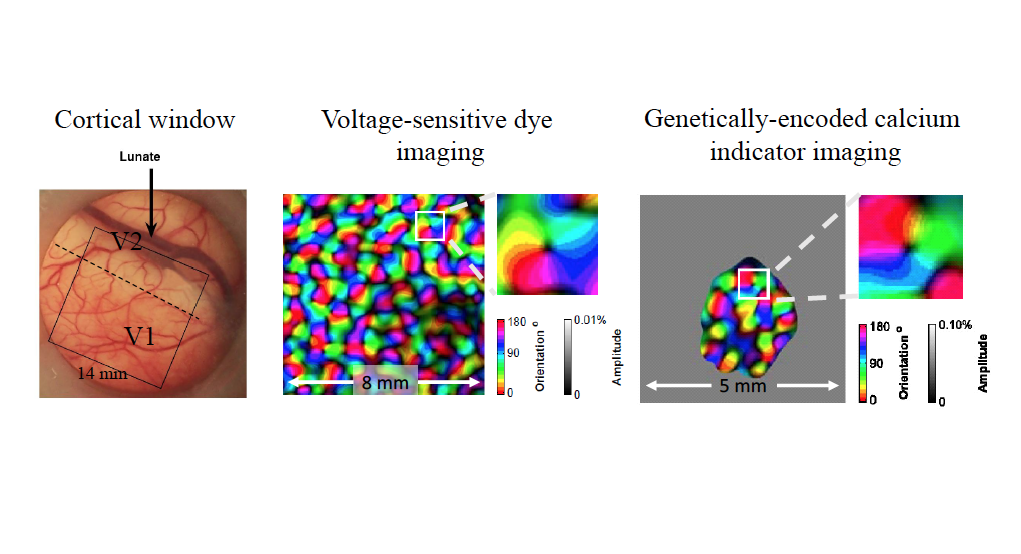
Decision related activity and top-down attentional modulation in primate V1
Description
While performing challenging perceptual tasks such as detecting barely visible targets, our perceptual reports vary across presentations of identical stimuli. What fraction of the neural variability that correlates with this perceptual variability is present in the primary visual cortex (V1)? To address this question, we recorded neural population responses from V1 using voltage-sensitive dye imaging while monkeys performed a challenging reaction-time visual detection task. We found that V1 responses in the period leading to the decision correspond more closely to the monkey’s report than to the visual stimulus. These results, together with a simple computational model that allows one to quantify the captured choice-related variability, suggest that most of this variability is already present in V1.
Top-down modulations from higher visual cortical areas are one potential source for decision-related variability in V1. In a second study, we characterized two possible forms of top-down effects in V1. We found that V1 responses are significantly modulated by stimulus’ relevance but not by stimulus’ spatial uncertainty, indicating that top-down modulations in V1 help to ignore task-irrelevant information rather than to allocate limited representational resources. However, the spatiotemporal characteristics of the top-down modulations are different from those of the choice-related variability, suggesting a minimal contribution of these top-down modulations to the choice-related variability.
Speaker Bio
Eyal Seidemann received his PhD in Neuroscience from Stanford University where he worked with Bill Newsome. He was a postdoctoral fellow with Amiram Grinvald at the Weizmann Institute of Science, before accepting a faculty position at the University of Texas, Austin. He is currently a professor of Neuroscience and Psychology. His lab uses optical, genetic and electrophysiological techniques to study the cortical mechanisms that mediate visual perception and visually guided behavior in non-human primates.

